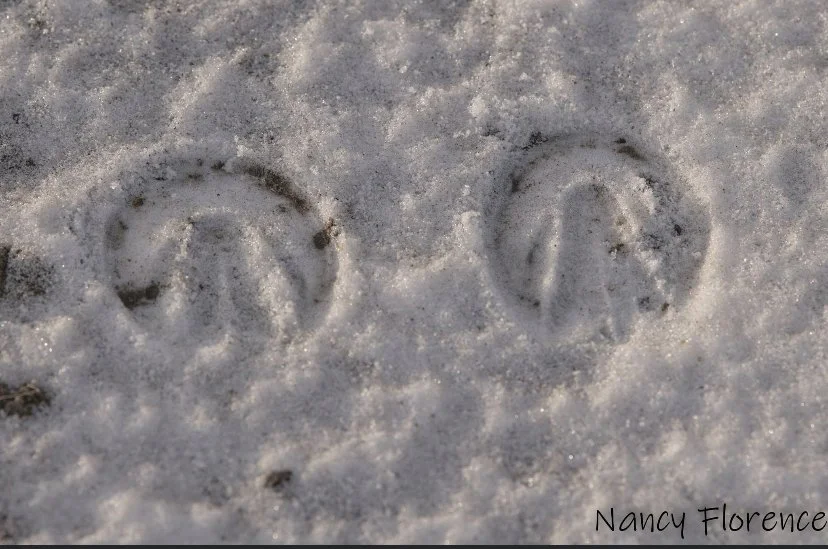On the range
Sharing the Range
By Brooklyn Kirk (12)
Here on the Virginia Range, the horses live harmoniously with thousands of mule deer. These interesting creatures roam the range and are only 3 to 3.5 feet tall. They weigh about 130-280 pounds. Mule deer have a white rump and a white tail with a black tip. Just like the horses on the range, they grow thick winter coats to keep them warm. These fluffy, 4-legged creatures are definitely not carnivores. They mostly feed on forbs (flowering plants), fruit, leaves, and twigs off small trees. With a sense of smell 1000 times stronger than a human, they are able to detect water as deep as 2 feet underground.
Have you ever wondered why these velvet-horned creatures are named Mule deers? Yes, they are named after 2 different animals. It’s all about the ears! Just like the mule, the mule deer's ears are extremely long. In fact, those ears are about ¾ the length of their heads, and each ear moves independently. When startled, they are able to leap a span of up to 24 feet and land on all four feet at the same time. Mule deer are very popular in the United States and thrive all the way from Alaska to Baja California.
If you are ever on the range during the morning or early evening hours, make sure to keep your eyes peeled for one of these bounding animals. Don’t mistake them for a mule though!
Did you know?
By Deborah Walker
You’ve likely heard the saying, “no hoof no horse”, and frankly it’s the truth. Domestic horses have regular ferrier visits for trimming and shoeing. But Mustangs … that’s a different story. On the range mustangs can travel up to 20- 40 miles a day grazing, sleeping, playing, playing, and just enjoying life. This constant movement keeps the mustang foot hard, and perfectly trimmed for their conformation. Genetically, they tend to have healthier feet due to adaptation to their environment. Like domestic horses, mustangs have different conformations and different hoof shapes to accommodate their body type.
On the range, we see horse prints all the time and we are amazed at the perfection we see and the lovely varied shapes. In the photos you’ll see the frog in the middle of the hoof sole (see photo).
The wall of the hoof is made of material somewhat like a horn and must be trimmed or worn down naturally. It doesn’t contain any vessels or nerves. The frog and the wall are the parts of the hoof that bear the horse’s weight, not the sole as some may think. The hoof wall prevents moisture evaporation due to the material it is made of. The new layers of the hoof wall grows continuously wall at about ⅜” per month, which takes place just below where the skin meets the coronet (see photo), and because of the terrain they travel and the amount of travel, mustangs are trimming away any hoof that may be seen as “overgrowth”.
Just another amazing fact about the American Mustang.





